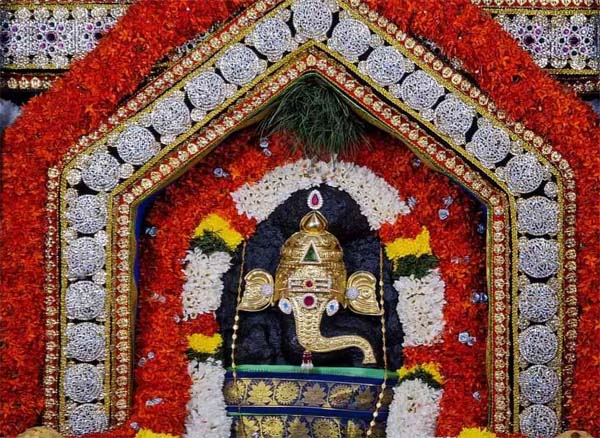Sri Mahaganapathi Temple is located on East Park Road at Malleshwaram in Bengaluru, Karnataka. Thes shrine is dedicated to Ganesha or Ganapathi.
Malleshwaram East Park Road Sri Mahaganapathi Temple History
The idol of Sri Maha Ganapathi was discovered by Sri Maan Giriyappa Gowda in a lake near Nelamangala. At that time, devout followers built a small sanctum (garbhagudi) on top of a hill, and the temple was established in 1930 on the occasion of Varamahalakshmi festival.
This temple is famously known by several names: “Guddada Ganapathi” (Hill Ganapathi), “Swayambhu Ganapathy” (self-manifested), Sri Maha Ganapathi, and “Eedugai Ganapathi” (Coconut-breaking Ganapathi).
In 1964, the revered Jagadguru Sri Sri Sri Abhinava Vidyatirtha Mahaswamiji of Sringeri Sharada Peetham, upon observing that the temple lacked a tower (gopuram), initiated and completed its construction and conducted the Kumbhabhishekam (consecration ritual).
Special Features of Sri Maha Ganapathi:
-
Within the temple premises are ancient trees, including a Peepal tree (Ashwatha) and a Shami tree, estimated to be 90–100 years old.
-
For the welfare of the world and to help devotees fulfill their wishes, Sri Suthram Subramanya Shastri initiated the Sankashta Hara Chaturthi Pooja about 50 years ago, and it has been observed continuously since then with the participation of numerous devotees.
-
As part of their vow (ishtartha), devotees bring two coconuts, pray to Sri Maha Ganapathi, offer them, and upon fulfillment of their wishes, return to break 21, 54, 108, or 1008 coconuts based on their capacity – a unique tradition that led to the name “Eedugai Ganapathi.”
-
For speedy completion of marriages and auspicious functions, a special ritual involving 108 Kadabu garlands is performed.
-
From 10 Vinayaka Chaturthi Festival (Bhadrapada Shuddha Chaturthi until the Anantha Padmanabha festival), special Ganapathi pujas, decorations, and celebrations are carried out.
Temple Sanctums:
The temple premises house a total of six sanctums (shrines). Among them is a shrine for Sri Banashankari Amma, where the Banada Hunnime festival is celebrated every year with great grandeur. On the final day, it is customary to perform Samprokshane (ritual sprinkling) with the holy water used in the deity’s abhisheka for dosha nivarana (removal of negative influences).
Shiva is worshipped here as Markandeshwara Swamy.
